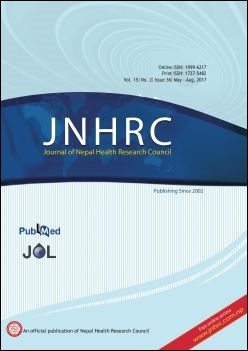Role of Intravenous Ferric Carboxy-maltose in Pregnant Women with Iron Deficiency Anaemia
Keywords:
Ferric carboxymaltose, iron, deficiency anaemia, pregnancyAbstract
Background: Iron deficiency is a common nutritional deficiency amongst women of childbearing age. Peri-partum iron deficiency anaemia is associated with significant maternal, foetal and infant morbidity. Current options for treatment include oral iron, which can be ineffective and poorly tolerated, and red blood cell transfusions, which carry an inherent risk and should be avoided. Ferric carboxymaltose is a modern treatment option. The study was designed to assess the safety and efficacy of intravenous ferric carboxymaltose for correction of iron deficiency anaemia in pregnant women.
Methods: A prospective study was conducted at Institute of Kidney Disease and Research Centre, Ahmedabad from January 2014 to December 2016. Antenatal women (108) with iron deficiency anaemia were the study subjects. Socio-demographic profile was recorded and anaemia was assessed based on recent haemoglobin reports. Iron deficiency was diagnosed on basis of serum ferritin value. Intravenous ferric carboxymaltose as per total correction dose (maximum 1500mg) was administered to all women; the improvement in haemoglobin levels were assessed after 3 weeks of total dose infusion.
Results: Most of the women(n= 45, 41.7%), were in the age group of 27-30 years. Most of the women (n = 64, 59.3%) had moderate anaemia as per WHO guidelines. Mean haemoglobin levels significantly increased over a period of 3 weeks after Ferric carboxymaltose administrationand no serious life threatening adverse events were observed.
Conclusions: Intravenous ferric carboxymaltose was safe and effective in pregnent women with iron deficiency anaemia.
Downloads
Downloads
Published
How to Cite
Issue
Section
License
Submission of the manuscript means that the authors agree to assign exclusive copyright to JNHRC. The aim of JNHRC is to increase the visibility and ease of use of open access scientific and scholarly articles thereby promoting their increased usage and impact. Hence, JNHRC grants permission to read, download, copy, distribute, print, search, or link to the full texts of these articles which is available online (http://jnhrc.com.np) freely.
The articles in this journal are licensed under a Creative Commons Attribution 4.0 International License.

